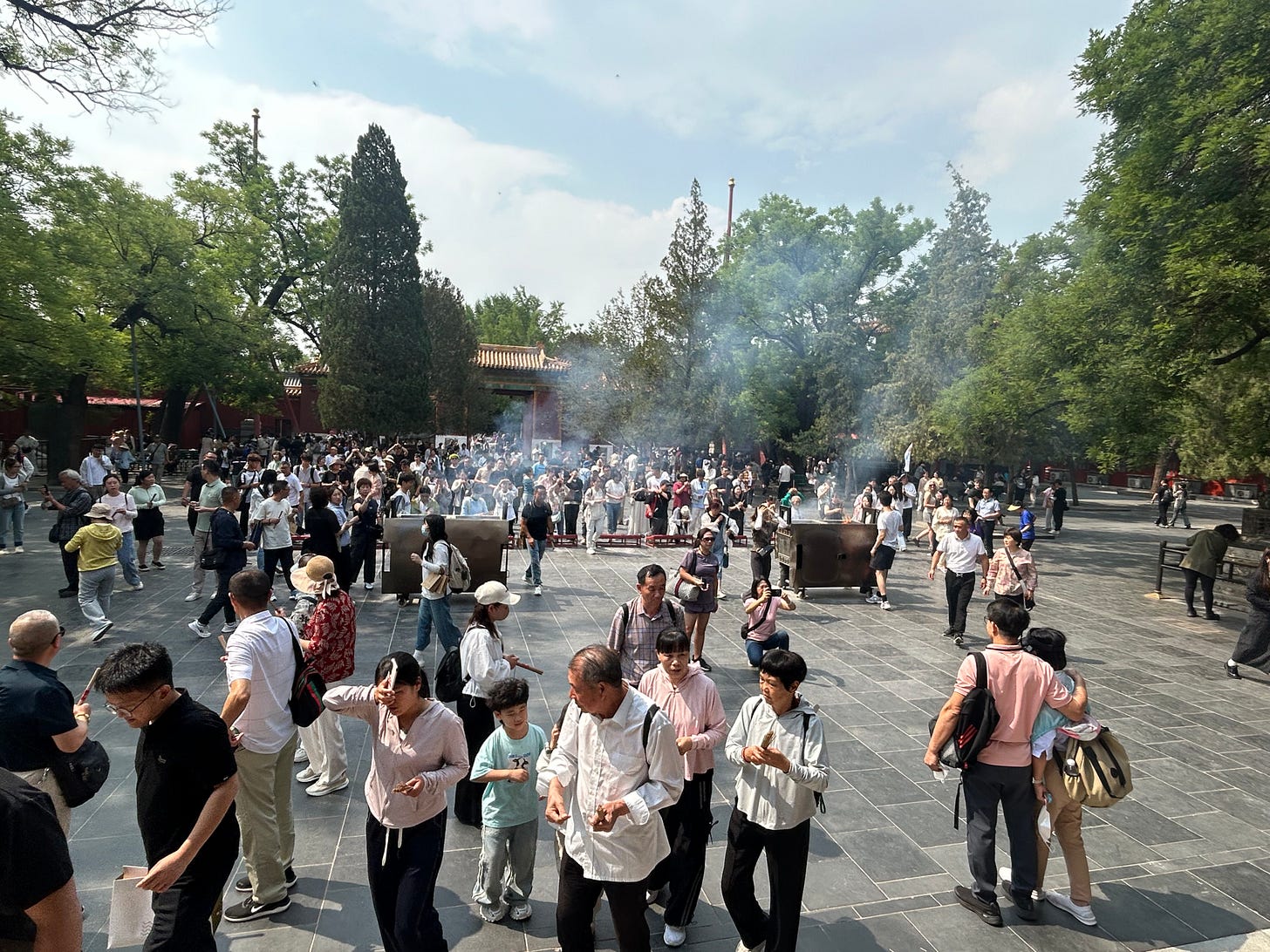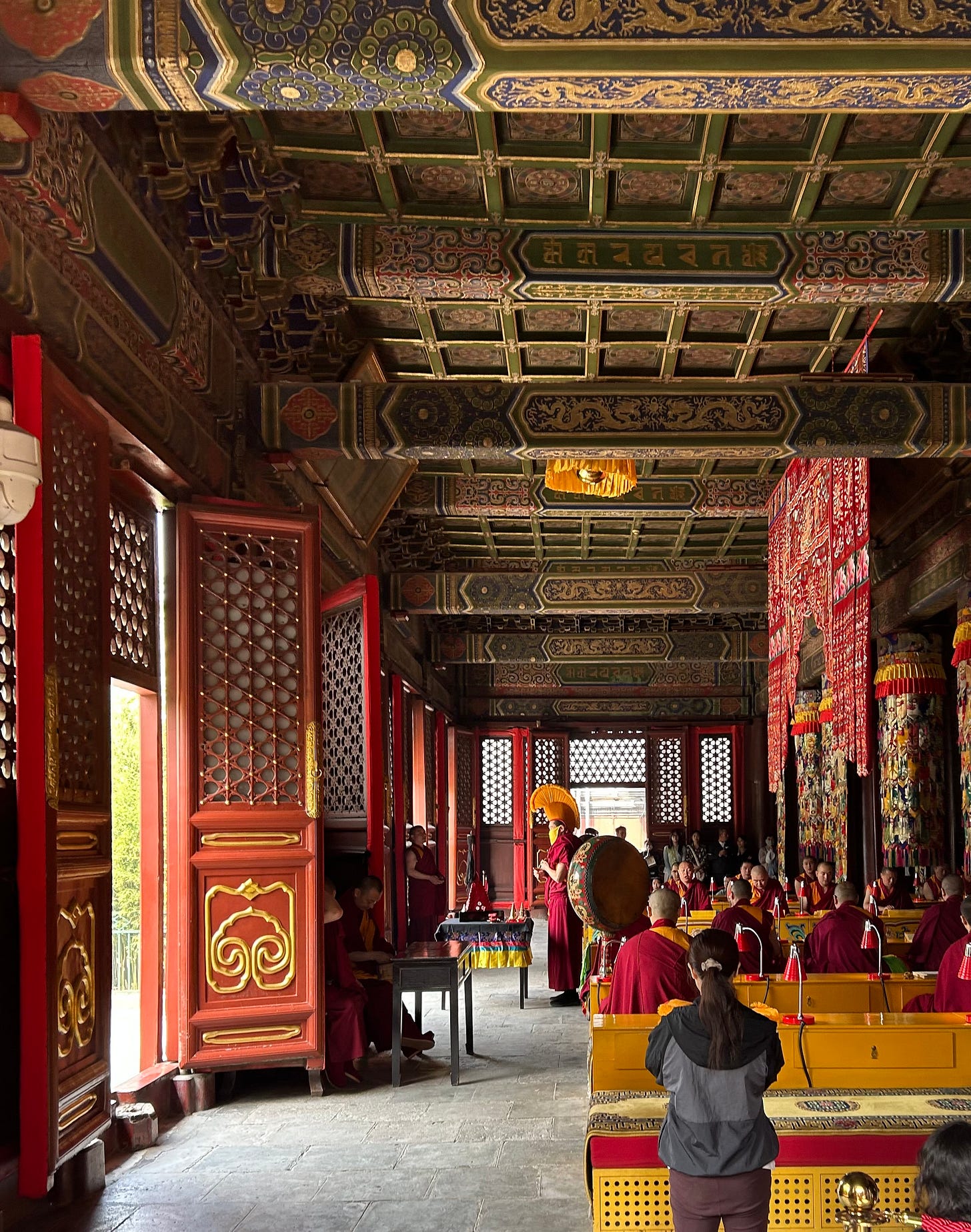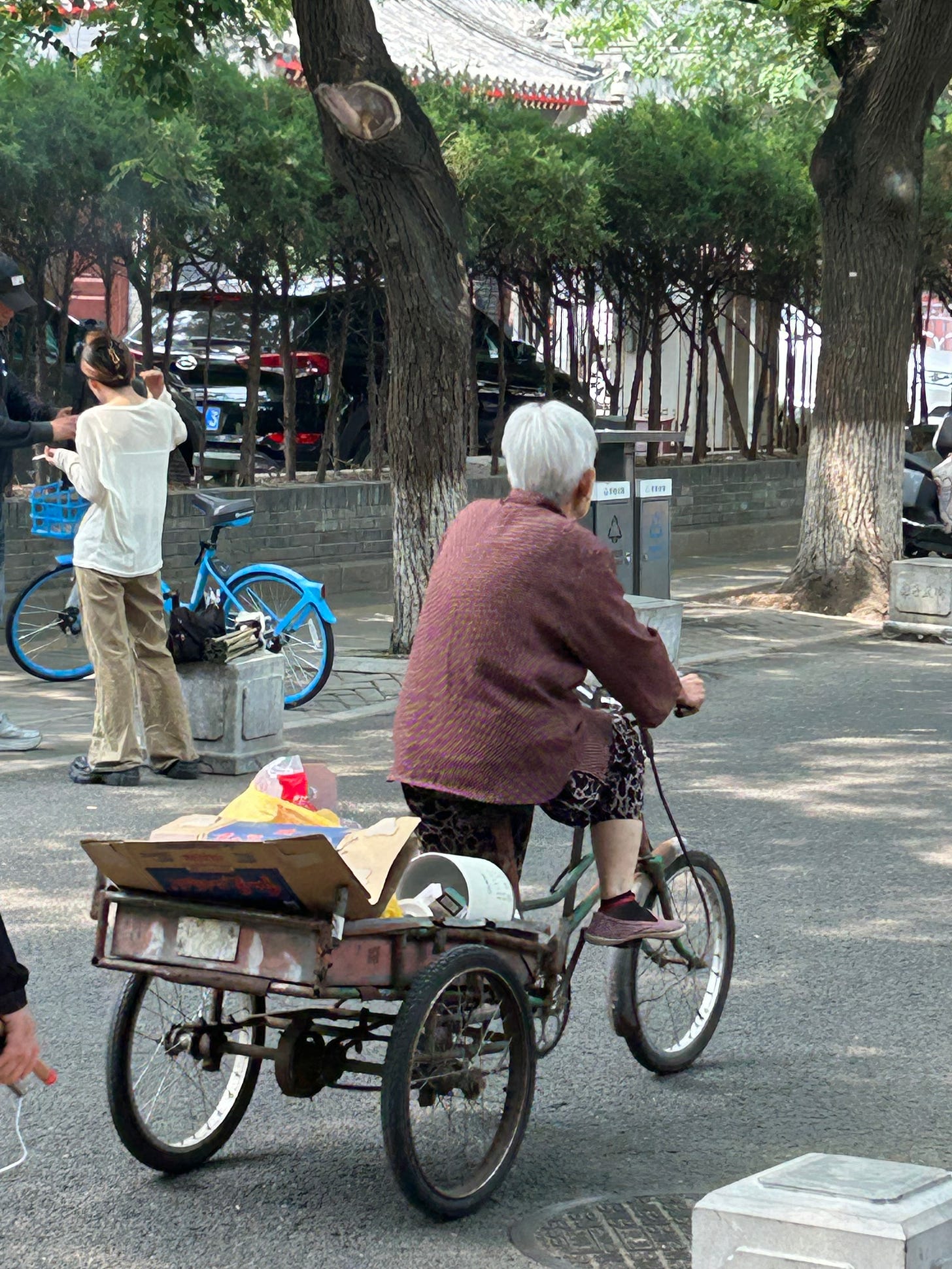Immersion
I arrived early am in Beijing after a sleepless overnight flight. My taxi from the airport took me through miles of suburbs and was taken aback by the sheer number of residential tower blocks. Repetitions of the same style, these modern looking, functional high-rise apartments, were arranged in patterns of six to ten buildings with green space between them providing a breath of openness amidst the density. This was a Corbusian paradise that efficiently housed countless numbers of residents: utilitarian housing Chinese style.
I found my small hotel Beijing’s northern suburbs and since my room wasn’t ready at this early hour (7am) I set out tired but excited to explore, taking the metro to visit the famous Lama Temple .
The subway was a sensory immersion into Chinese daily life. Roughly 25% wore face masks, many covering the whole face and neck. I noticed occasional couples whose style evoked South Korean pop fashion, short skirts and cool dark sunglasses, which juxtaposed with the rest of the passengers as the Chinese dress code seemed diverse and fairly conservative.
The Lama Temple was a sanctuary of beauty and devotion. The temple was filled with Chinese and other Asian visitors, some monks with Tibetan appearance. Everybody was engaged in deep prayer. Monks stood out with their shaved heads, hats and robes of grey, orange, or red, their garments reflecting various orders and traditions. Some wore long Tibetan hats, their presence cheerful and grounded.
Children, women, and men bowed, knelt, and offered incense and prayers to different buddhas. Clouds of incense drifted through the air, lending a mystic softness to the curved roofs and ancient carvings.
Then came the clanging and drumming of prayer time at the temple’s center ‘The Pavilion of ten thousand happinesses’. Around forty monks sat cross-legged, reciting scriptures, and chanting. One stood at the front, a figure wearing a very large yellow hat above his red robes, looking like a holy cockerel and performing what seemed like ritual magic. He waved feathers and incense over small red bricks, chanting, moving his hands in hypnotic patterns.
The beating of the drum and the blare of the trumpets followed, sounds that resonated deep in my body. At first, I thought the word “primitive” described the experience, but quickly realized it was an ancestral connection I felt, deep earthy and raw. The rawness of the blaring trumpet and repetitions of the drums and chanting resonated in my body. The monks and lay visitors chanted and prayed, the yellow hat leader led the ceremony. The vibration of sound was intense and powerful and a little chaotic in stark contrast to the structured church services and choral harmonies of the west. Here, rhythm and chaos intertwined—monks chanting, drums pounding, trumpets screaming with beauty and disarray. It was profoundly moving.
I lit my incense sticks and joined the prayerful, I sat and observed taking in the waves of spirituality in this holy place.
I left feeling immersed in blessings and crossed the road to wander through the hutongs, the small narrow streets of old Beijing. A cricket sang from a cage hanging at the entrance door of a house. An old woman pedalled her tricycle the back filled with vegetables.
The nearby Confucian temple was closed, so I returned to my hotel in the warm sunshine, moved by my morning's immersion experience. As I entered the hotel lift, a robot entered too, talked to me in Chinese and exited on the floor below me, likely delivering room service. And I thought, here I am….robots, Tibetan monks, mass housing complexes, funky fashions….. welcome to China!”
Please support my writing by becoming a paid subscriber - thank you









